Microphones for the camera: varieties and secrets of choice
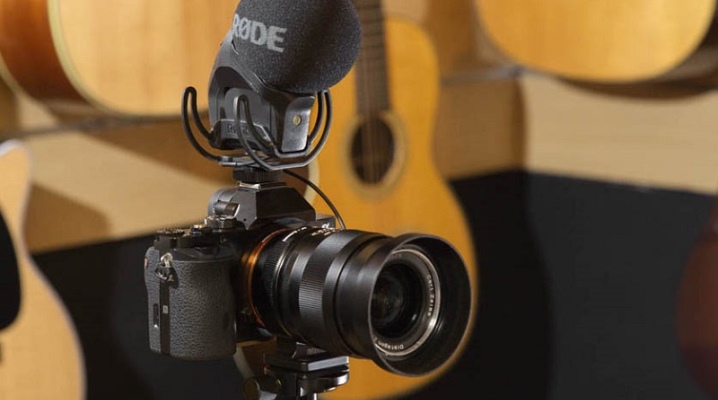
The range of quality and versatile cameras grows relentlessly, and so does the selection of reliable microphones. Nowadays, many large manufacturers produce practical microphones that do an excellent job. In this article, we will find out what varieties they are divided into and how they should be selected correctly.



Peculiarities
Microphones for modern cameras have many features that attract users.
- Microphones come in both large and miniature sizes. It is especially convenient to work with such equipment, and in matters of transportation it turns out to be practical and non-capricious.
- Camera microphones from current brands boast perfect build quality. In the original branded models, you will not find a single flaw. The equipment is made of strong and durable materials, so it does not have to be frequently repaired or replaced with a new one.
- In operation, microphones for cameras are very simple. It is not difficult to understand how this or that equipment works.
- Special models of high quality microphones are often used in professional activities. Journalists and correspondents cannot imagine their work without such devices. This speaks of the high functionality of the microphones and the excellent quality of sound recording.
- Microphones for cameras are presented in a rich assortment. A buyer with any requirements and requests can choose a useful and practical type of device. It can be both an amateur and a professional.
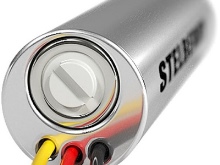
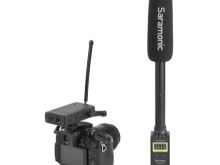
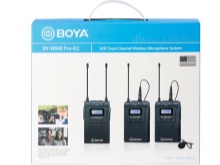
Microphones for cameras, as a rule, do not have serious flaws and shortcomings. TO shortcomings features of some models can be attributed. For example, popular small buttonholes have to be meticulously and carefully attached so that they do not come into contact with clothes. Otherwise, the sound will be recorded with a lot of noise. If such a device is installed just below the desired mark, the sound will be recorded much quieter.
There is a so-called on-camera cannon microphone. Main minus this device - to record noise when the user is moving or in windy conditions. With such equipment, it is not recommended to move too quickly from place to place, as this will necessarily negatively affect the purity and quality of the audio recording. The listed nuances can be attributed more to the peculiarities of operation, rather than to serious shortcomings of the equipment.
The main thing is to use the selected microphones correctly so as not to run into unnecessary problems.
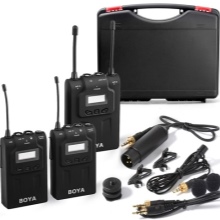

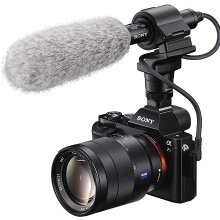
Species overview
As mentioned above, current camera microphones come in a variety of modifications... Each subspecies has its own distinctive features, operating features and technical capabilities. The buyer must take into account all of the above nuances when choosing the optimal device. Let's take a closer look at different types of camera microphones.
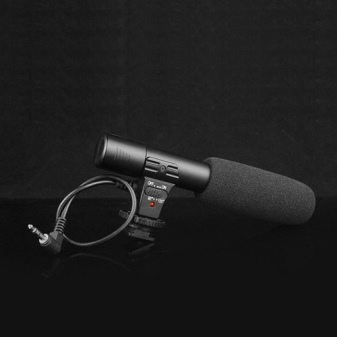
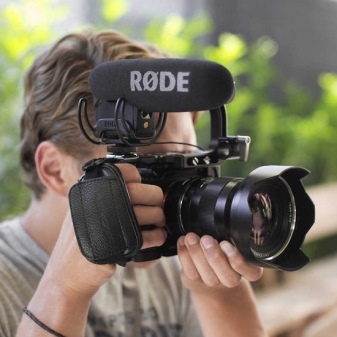
Wired lapel
Most often the microphone, which is popular called "buttonhole", is made omnidirectional, although you can also find specimens directed to one point on sale. Such a device becomes an excellent solution if you need to record high-quality sound, but without unnecessary ambient noise. Many of the lavalier microphones are designed to work in tandem with cameras (digital SLR), smartphones, camcorders.
While working with such a device, the speaker should not touch its surface (noise will appear), and to reduce interference, it is recommended to wear a special windscreen.
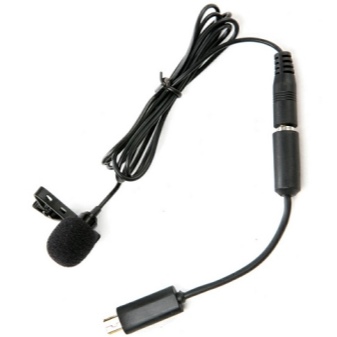

Radio microphone
In this model, unlike the previous one, there is both a receiver and a transmitter. The latter needs to be fixed on the belt, after which a buttonhole is attached to it. As for the receiver, it is installed in the so-called hot shoe. When operating such a device, the transmitter from the receiver should be kept at a minimum distance, and in case of loss of sound, you need to pay attention to the adjustment of the receiver.
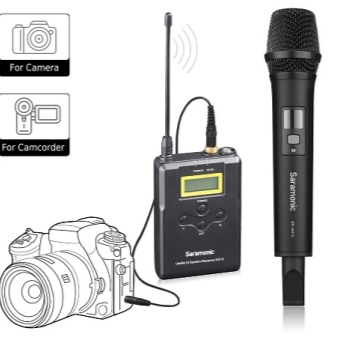
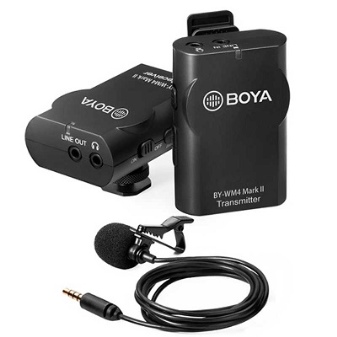
Manual
The common model for general use is of the traditional type. There are both wired and wireless (with Bluetooth module) modifications. It boasts a high-quality audio decoder, which should have a built-in shock absorber to minimize extraneous noise. Handheld microphones for cameras are designed to be as reliable and durable as possible so that they can withstand physical impact without problems and do not break. It is advisable to use omnidirectional handheld microphones.
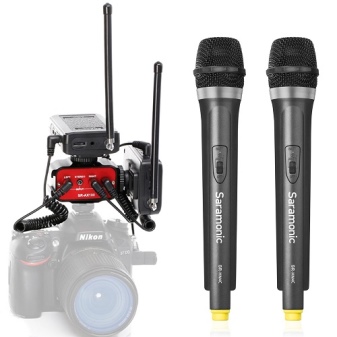
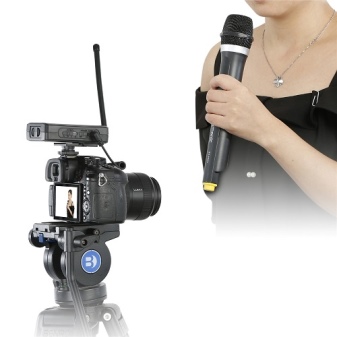
"A gun"
The device carries this name due to a long interference tube, which has slots in front of the cartridge, which resembles a shotgun. Thanks to the action of this tube, it is possible to eliminate sounds that emanate more than 30 degrees to the sides, but the audio from the front is perfectly captured by the technology. It must be remembered that The "gun" is an external microphone, which is much more sensitive to the influence of the wind, so it is not recommended to move too fast with it in your hands.
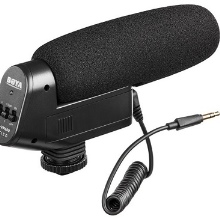
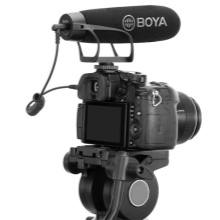
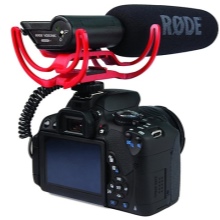
Top Models
Each category has its own top-end camera microphones that are very popular and in demand among consumers. Let's take a look at a small rating of the best devices with excellent quality.
MBK-M022
A popular device that characterized by small dimensions and excellent frequency performance. The microphone is designed specifically for modern CCTV cameras, but can be easily integrated into any technical device with a 12 V supply voltage. The current consumption of this device is 6 mA. The model is inexpensive, which attracts many consumers.

Azden WMS-PRO + i
High quality radio system with a small footprint... It has both a reporter and a lavalier type of microphones. You can connect the equipment to a tablet computer or smartphone. The equipment is of the wired type, the directional pattern is circular. A 3.5 mm mini-Jack is provided. The weight of the microphone reaches 226 g.
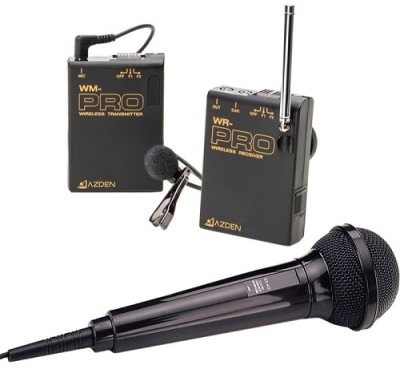
Rode VideoMic Me
Microphone designed to connect to modern smartphones. Provides good quality audio recording. It is characterized by very small dimensions, which makes it convenient to use and transport. The microphone is reliable, durable and practical. There is 1 windscreen, wired type. Directional pattern - cardioid.
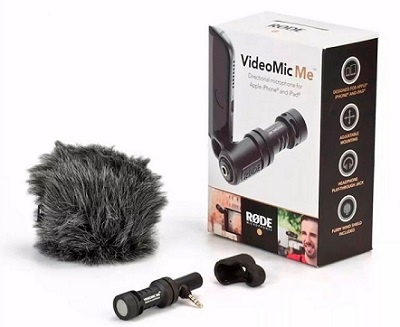
Boya BY-M1
Miniature high-quality lavalier microphone. It can interact with modern DSLR cameras, external decoders, camcorders, smartphones and tablets. The technique is universal in use and has a democratic cost. The device is wired and weighs only 20.5g.
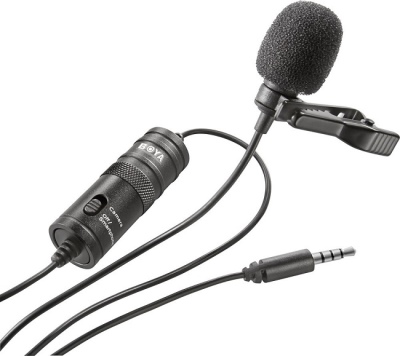
Boya BY-WM8
Completes the top of the best specimens popular wireless system, characterized by excellent build and recording quality. Can record sound even from remote or mobile sources. The microphone is omnidirectional, suitable for both camcorders and SLR cameras. It has a circular directional pattern and is equipped with a 3.5 mm mini-Jack connector.
Of course, the microphone models described in this rating are far from all existing specimens with decent technical characteristics. There are many equally attractive devices on sale. The main thing is to carefully select the desired option.
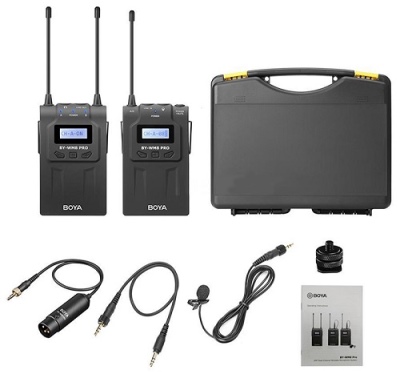
Criterias of choice
The range of modern microphones designed for camcorders, cameras, smartphones and tablets is huge. Due to the widest choice, many consumers are "lost" in search of the optimal model that will meet all the requirements. Let's figure out what criteria for choosing a camera microphone should be taken into account.
- It is important to decide in advance how and for what the technique will be used. For professional video filming, you should find an expensive and high-quality model that records sound as clearly and cleanly as possible. You shouldn't skimp on such equipment. If the microphone is selected for amateur and home use, then there is no point in overpaying for an improved device - pick something more affordable, but no less good quality.
- Decide for yourself, technique what type will be most useful to you: active or passive, wired or wireless. Initially, knowing which device you really need, it is easier to find the perfect copy on sale.
- Important and technical characteristics of the selected equipment... Pay attention to the sensitivity of the microphone, its power supply, available connectors, and other important parameters. Make sure the technique you choose will match the technique you want to sync with, as it is possible to make the mistake of buying a microphone only for smartphones if you want to use it in tandem with a camcorder.
- Find the right microphone size. The device should be easy to operate and transport. It is advisable to make sure of this before payment, so as not to regret the perfect purchase later.
- An important criterion is sound recording quality. Try to select only microphones for cameras that do not record extraneous ambient noise, do not creak, wheeze, or exhibit ugly sound distortion. Using this technique will be very inconvenient. It is advisable to check how the microphone “writes” while still in the store to make sure it is working properly and “conscientiously working”.
- Having chosen the ideal model, in your opinion, do not rush to pay. Examine the microphone as carefully and meticulously as possible. Examine all its surfaces, functional units, connectors and cables (if any). Take a closer look at the build quality of the device. The microphone should be in perfect condition, you should not notice any scratches, chips, damaged wires, or broken parts on it. If you nevertheless notice any shortcomings, it is better to refuse to purchase.
- Prefer branded camera microphones. Only products from a well-known company will serve for many years "faithfully", will not be subject to frequent breakdowns and will delight the user with excellent recording quality. Doubtful and prohibitively cheap copies from "clandestine" Chinese manufacturers are strongly discouraged - their quality will obviously not please the user, as well as the recorded sound.
It is recommended to buy such equipment only in specialized retail outlets. You should not look for a high-quality model from a well-known brand on the market or in a dubious store with an incomprehensible name. Here you will find the cheapest products, but their quality is unlikely to suit you.

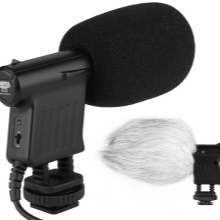
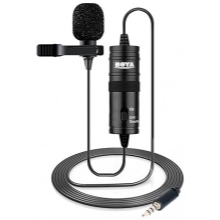
How to connect?
It is important to correctly connect the selected microphone in order to evaluate the quality of its work. Let's consider how to do it correctly using the example of a compact "buttonhole".
- Fix the microphone correctly. The best place is the area in the middle of the chest (the place of the cutout on the sweater or the 2nd button of the shirt).If the microphone is located lower, then the sound will be recorded significantly quieter.
- There is an opinion that the lapel microphone should be mounted not exactly in the middle, but closer to one of the sides. This will avoid the reflection of sound waves inside the chest and their pick-up by the device.
- Secure the buttonhole so that the windscreen and capsule do not come into contact with clothing.
- Once you secure the buttonhole in the middle of the chest, a certain length of wire will stretch down from it to the recorder or camera. If the presenter is wearing a tight-fitting T-shirt or shirt, then the wire will be clearly visible and will catch your eye on the video.
- Experts do things differently. Instead of hanging the cable down, it is passed from the front along the presenter's body, wrapped over the collarbone and shoulder onto the back. Already at the back, the wire goes down to the recorder.
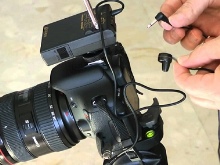
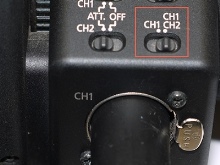
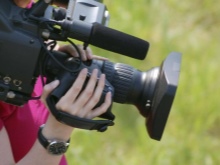
Connect the cable to the appropriate input on your camera. To avoid mistakes in the connection and operation of the microphone for the camera, it is necessary to read its instruction manual.
Even if you are sure that you will cope with such a technique on your own, and you do not need hints, you still should not risk it - any nuances and features of using the device that you may not have guessed about will be mentioned in the manual.
In the next video, you will find a detailed overview of lavalier microphones for smartphone and camera.













The comment was sent successfully.